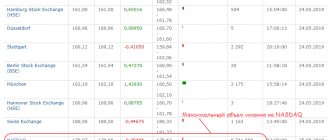Mark Twain once divided the world into two types of people: those who have seen the famous Indian monument Taj Mahal, and those who have not. The same can be said about investors.
There are two types of investors: those who are aware of investment opportunities in India and those who are unaware. Although Indian exchanges constitute less than 2.2% of the total global market capitalization as of January 2021, a closer look will reveal the same , what you would expect from any promising market.
Here we will provide an overview of the Indian stock market and how interested investors can access it.
BSE and NSE
Most of the trading in the Indian stock market takes place on two stock exchanges: the Bombay Stock Exchange (BSE) and the National Stock Exchange (NSE). BSE has been in existence since 1875. NSE, on the other hand, was founded in 1992 and began trading in 1994. However, both exchanges use the same trading engine, trading hours, and settlement process.
As of February 2021, the BSE had 5,518 listed companies2 while rival NSE had about 1,799 as on December 31, 2021. Of all the companies listed on the BSE, only about 500 account for more than 90%. its market capitalization; the rest of the crowd consists of highly illiquid stocks.
Almost all major firms in India are listed on both exchanges. BSE is an older stock market, but NSE is the largest stock market in terms of volume. Thus, NSE is a more liquid market. In terms of market capitalization, they are both comparable at around $2.3 trillion. Both exchanges compete for order flow, resulting in lower costs, market efficiency and innovation. The presence of arbitrageurs keeps prices on the two stock exchanges within a very narrow range.
Financial literacy [edit]
NSE is associated with several universities such as Gokhale Institute of Politics and Economics (GIPE), Pune, Bharati Vidyapeeth Dimed University (BVDU), Pune, Guru Gobind Singh Indraprastha University, Delhi, Ravenshaw University, Cuttack and Punjabi University, Patiala, among others to offer MBA and BBA courses. NSE has also provided a simulated market simulation software called NSE Learn to Trade (NLT) to develop investing, trading and portfolio management skills among students. [20] The simulation software is very similar to the software currently used by market professionals and helps students learn how to trade the markets.
NSE also conducts online examinations and awards certificates under its Certification in Financial Markets (NCFM) programs. [21] The certificates are currently available in 46 modules covering various sectors of financial and capital markets, at both entry and advanced levels. The list of various modules can be found on the official website of NSE India. Additionally, it has been offering a short-term course called NSE Certified Capital Market Professional (NCCMP) since August 2009. [22] NCCMP or NSE Certified Capital Market Professional is a 100 hour program over 3-4 months conducted in colleges covering theoretical and practical training in subjects related to capital markets. NCCMP covers topics such as stock markets, debt markets, derivatives, macroeconomics, technical analysis and fundamental analysis. Successful candidates receive joint certification from NSE and stakeholders.
Trading mechanism
Trading on both exchanges is carried out through an open electronic book of limit orders, in which the matching of orders is carried out by a trading computer. There are no market makers and the entire process is order driven, meaning market orders placed by investors are automatically matched to the best limit orders. As a result, buyers and sellers remain anonymous.
The advantage of an order driven market is that it provides greater transparency by displaying all buy and sell orders in the trading system. However, in the absence of market makers, there is no guarantee that orders will be filled.
All orders in a trading system must be placed through brokers, many of whom provide online trading capabilities to retail clients. Institutional investors can also take advantage of the Direct Market Access (DMA) option, in which they use trading terminals provided by brokers to place orders directly into the stock market's trading system.
Settlement and trading hours
Spot equity markets follow a T+2.5 rolling settlement, meaning that any trade that occurs on Monday settles by Wednesday. All trading on the stock exchanges takes place from 9:55 to 15:30 Indian Standard Time (+5.5 hours GMT) from Monday to Friday. Delivery of shares must be in dematerialized form, and each exchange has its own clearing house, which assumes all settlement risks, acting as a central counterparty.
Trading schedule [edit]
Trading in the shares segment occurs on all days of the week (except for Saturdays, Sundays and holidays announced by the Exchange in advance). Market timing of the equity segment:
- (1) Pre-open session: Entering and changing an order Open: 09:00
- Entering and modifying orders Closing: 09:08 *
* with occasional last minute closures. The pre-open corresponding order begins immediately after the end of the entry to the open order.
- (2) Regular Trading Session Normal / Retail Debt / Limited Physical Market Open: 09.15
- Regular / Retail Debt / Limited Physical Market Closing: 3:30 p.m.
- After market hours: from 16:00 to 09:00.
Market indices
Two prominent indices in the Indian market are Sensex and Nifty. Sensex is the oldest equity market index; it includes shares of 30 firms listed on the BSE, which accounts for about 47% of the free float market capitalization of the index. It was created in 1986 and provides time series data going back to April 1979.
Another index is the Standard and Poor's CNX Nifty; it comprises 50 stocks listed on the NSE, representing about 46.9% of its free float market capitalization. It was created in 1996 and provides time series data starting in July 1990.
Who can invest in India?
India started allowing outward investment only in the 1990s. Foreign investment is divided into two categories: foreign direct investment (FDI) and foreign portfolio investment (FPI). All investments in which the investor takes part in the day-to-day management and operations of the company are considered as foreign direct investment, while investments in shares without any control over the management and operations are considered as FDI.
To make portfolio investments in India, you need to register either as a Foreign Institutional Investor (FII) or as one of the sub-accounts of one of the registered FIIs. Both registrations are provided by market regulator SEBI.
Foreign institutional investors mainly consist of mutual funds, pension funds, endowments, sovereign wealth funds, insurance companies, banks and asset management companies. Currently, India does not allow foreign persons to invest directly in its stock market. However, high net worth individuals (with a net worth of at least $50 million) can be enrolled as FII sub-accounts.
Foreign institutional investors and their sub-accounts may invest directly in any stock listed on any stock exchange. Most portfolio investments consist of investments in securities in the primary and secondary markets, including shares, debentures and warrants of companies listed or to be listed on a recognized stock exchange of India. FIIs can also invest in unlisted securities outside the stock exchanges, subject to price approval by the Reserve Bank of India. Finally, they can invest in mutual fund units and derivatives traded on any stock exchange.
An FII registered as a debt-only FII can invest 100% of its investment in debt instruments. Other FIIs must invest at least 70% of their investment in equity. The remaining 30% can be invested in debt. FIIs must use dedicated non-resident rupee bank accounts in order to transfer money to and from India. Balances in such an account can be fully repatriated.
Restrictions and investment ceilings
The Government of India sets a limit on FDI and there are different ceilings for different sectors. The government has been gradually increasing the ceilings for some time. The maximum level of foreign direct investment usually ranges from 26% to 100%.
By default, the maximum limit for portfolio investment in a particular listed firm is determined by the foreign direct investment limit established for the sector to which the firm belongs. However, there are two additional restrictions on portfolio investment. First, the aggregate investment limit of all FIIs, including their sub-accounts, in any specific firm, was set at 24% of paid-up capital. However, the same can be extended to the sector limit with the approval of the board of directors and shareholders of the company.
Secondly, the investment of any individual FII in any particular firm should not exceed 10% of the paid-up capital of the company. The rules allow a separate 10% investment ceiling for each of the FII sub-accounts in any given firm. However, in the case of foreign corporations or individuals investing as a subaccount, the same ceiling is only 5%. The rules also set limits on investment in derivatives trading on stock exchanges.
Fight against corruption
On November 9, the Prime Minister announced the withdrawal of all 500 and 1,000 rupees notes from circulation. The authorities have announced a deadline until the end of this year when all old notes must be exchanged for lower denomination notes or new ones of 500 and 2,000 rupees. This measure is aimed, first of all, at solving problems with corruption, since the exchange will be possible only if there is declared income - at the collection points they will require an identity card and a certificate of payment of taxes.
Thus, a significant part of the cash flow is subject to replacement. To be precise, these bills make up 24.4% of the country’s total turnover and 86.4% of the total money supply. The measures taken will most likely deprive both ordinary citizens and private businesses of part of their profits for several months to come. In the long term, the measures taken should help solve the problems of corruption and the growing black market.
Investments for foreign companies
Foreign entities and individuals can access Indian shares through institutional investors. Many India-focused mutual funds are becoming popular among retail investors. Investments can also be made through certain offshore instruments such as fractional notes (PNs), depositary receipts such as American Depository Receipts (ADRs) and Global Depositary Receipts (GDRs), exchange-traded funds (ETFs) and exchange traded notes (ETNs).
As per Indian regulations, equity notes representing underlying Indian shares can be issued offshore by FIIs only to regulated entities. However, even small investors can invest in American Depositary Receipts, which are the underlying shares of some prominent Indian firms listed on the New York Stock Exchange and Nasdaq. ADRs are denominated in dollars and are subject to the rules of the US Securities and Exchange Commission (SEC). Similarly, global depositary receipts are listed on European stock exchanges. However, many promising Indian firms are not yet using ADRs or GDRs to access offshore investors.
Retail investors also have the option of investing in ETFs and ETNs based on Indian stocks. India-focused ETFs primarily invest in indices consisting of Indian stocks. Most of the stocks included in the index are already listed on the NYSE and Nasdaq.
As of 2021, the two most prominent ETFs based on Indian stocks are the iShares MSCI India ETF ( INPTF ). Both ETFs and ETNs provide a good investment opportunity for outside investors.
The essence
Emerging markets such as India are quickly becoming engines of future growth. Currently, only a very low percentage of Indian household savings is invested in the domestic stock market, yet Gross Domestic Product (GDP) has been growing at 7-8% annually for the last few years, although the average is 6%. In 2021 and 2021 and with a stable financial market, we may see more money joining the race. This may be the right time for outside investors to seriously consider joining the Indian bandwagon.
Over-the-Counter Exchange of India (OTCEI) listing requirements
While the OTCEI requirements make it easier for small and mid-cap companies to list, there are still some requirements that companies must meet before they are allowed to list.
Listing does require sponsorship from OTCEI members and requires two market makers. In addition, once a company is listed, it cannot be delisted for a minimum of three years, and a certain percentage of the issued share capital must be held by the promoters for a minimum of three years. This percentage is 20%.











